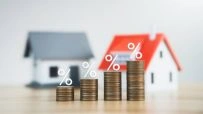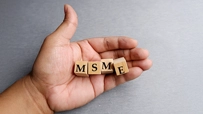Top Government Housing Schemes for First-Time Home Buyers in India (2025 Guide)
May 08, 2025

For first-time homebuyers, the process of purchasing a home can be overwhelming due to increasing property prices and complex loan eligibility requirements. Fortunately, several government-backed housing schemes have been designed to make homeownership more accessible, especially for first-time home buyers.
From central initiatives like PMAY-Urban 2.0 to state-level programs offered by regional housing authorities, there are multiple avenues to secure financial support, interest subsidies, and even tax benefits.
This guide will walk you through the most relevant schemes available in 2025, who they’re meant for, and how to take full advantage of them.
Who Qualifies as a First-Time Home Buyer?
As per government norms, a first-time home buyer is defined as someone who has never owned a pucca (permanent) residential property in India, either independently or jointly with another person.
To qualify under most government schemes, you typically need to meet the following basic conditions:
Meeting these criteria ensures that you are eligible to apply for subsidies, tax exemptions, and other housing benefits reserved exclusively for first-time home buyers.
Pradhan Mantri Awas Yojana – Urban 2.0 (PMAY-U 2.0)
The Pradhan Mantri Awas Yojana – Urban 2.0 (PMAY-U 2.0) is the renewed version of the original PMAY initiative launched in 2015. Introduced in late 2024, PMAY-U 2.0 continues the mission of "Housing for All" with improved features, streamlined eligibility, and a sharper focus on urban housing needs.
As a first-time home buyer, PMAY-U 2.0 can help you access interest subsidies, especially if you fall within the Economically Weaker Section (EWS) or Low-Income Group (LIG). The scheme is implemented through multiple verticals, including:
- Credit Linked Subsidy Scheme (CLSS) – Interest subsidy on home loans
- Beneficiary-Led Construction (BLC) – Support for building/enhancing houses on your own land
- Affordable Housing in Partnership (AHP) – Subsidized housing projects developed in collaboration with state authorities and private developers
To qualify, your annual household income should be below ₹6 lakh, and the property must be within a specified carpet area limit (up to 60 sq m. for EWS/LIG).
You can apply through designated banks, housing finance institutions, or the official PMAY-U portal.
Credit Linked Subsidy Scheme (CLSS)
Under PMAY-U 2.0, the Credit Linked Subsidy Scheme (CLSS) is the primary tool through which you can reduce your home loan interest burden. If you are eligible under EWS or LIG, CLSS provides a subsidy of up to ₹1.80 lakh directly credited to your loan account, thereby lowering your EMI.
Here’s how it works:
CLSS is only available to:
- Households with annual income up to ₹6 lakh
- Applicants who are buying or constructing a home for the first time
- Properties meeting the carpet area criteria (usually up to 60 sq.m. for EWS/LIG)
Note: The CLSS component for MIG-I and MIG-II categories has been discontinued as of 2022. Current benefits are only available to EWS and LIG segments.
State-Level Housing Schemes to Explore
Beyond central government initiatives, many states offer their own housing schemes to address local needs and urban housing gaps. As a first-time buyer, you may be eligible for additional subsidies, housing allotments, or land allocation through these regional programs.
Here are some prominent state-specific schemes worth considering:
Tip: Many of these schemes operate through annual or quarterly lotteries. Keep an eye on your state housing board’s website or official announcements to stay updated.
Additional Benefits First-Time Buyers Can Avail
Apart from subsidies and affordable housing access, first-time home buyers in India can benefit from a range of financial incentives and tax exemptions, making the overall cost of buying a home significantly more manageable.
Here are some noteworthy benefits:
How to Choose the Right Scheme for You
With multiple housing schemes available at both the central and state levels, it’s important to choose the one that best aligns with your financial situation, housing needs, and long-term goals.
Here’s a simple framework to guide your decision:
Use This Checklist:
1. Where is your property located?
2. What is your annual household income?
3. Do you already own land or plan to buy?
4. Are you buying ready-to-move or under construction?
5. Are you a woman applicant or co-owner?
Pro tip: You can combine a PMAY subsidy with a state-level scheme if eligibility overlaps — always check for compatibility.
Common Mistakes to Avoid When Applying
Applying for a government housing scheme is a major financial decision, and even small oversights can lead to delays, rejections, or missed benefits.
Here are some common pitfalls to watch out for:
Not Verifying the Latest Guidelines
Government schemes are updated regularly. Always refer to the official websites (like pmaymis.gov.in or your state housing board) for the latest rules and cutoff dates.
Overlooking Property Specifications
Many buyers apply for subsidies on properties that exceed the maximum carpet area or value limits, which disqualifies them from CLSS or PMAY benefits.
Incomplete Documentation
Missing out on essential documents like Aadhaar, income proof, or property papers can delay approval or cause your application to be rejected outright.
Applying Through Unverified Channels
Only apply through registered banks or housing finance institutions approved under the scheme. Avoid third-party agents promising "faster processing."
Assuming You’ll Qualify Automatically
Eligibility depends on income, ownership status, co-applicant profile, and more. Always cross-check your qualification before taking a loan or booking a property based on assumptions.
Final Thoughts
Buying your first home is one of the most significant financial decisions you’ll ever make—but it doesn’t have to feel out of reach. With the support of well-structured government housing schemes like PMAY-U 2.0, CLSS, and state-level initiatives, the path to homeownership is far more accessible today than it was a decade ago.
What’s important is that you take the time to understand your eligibility, gather the right documents, and apply through the right channels. With the right guidance and a little planning, you can maximize your savings, minimize your loan burden, and finally secure the home you’ve been working toward.
Buying a house has never been this easy! Avail Ujjivan SFB’s wide range of affordable home loan products and enjoy a hassle-free loan journey. From house purchase loan to plot loans and home improvement loans, we have it all! Alternatively, you can browse through Ujjivan SFB product suite - our wide range of financial products are designed to make your financial life better.
Disclaimer:
The contents herein are only for informational purposes and generic in nature. The content does not amount to an offer, invitation or solicitation of any kind to buy or sell, and are not intended to create any legal rights or obligations. This information is subject to updation, completion, amendment and verification without notice. The contents herein are also subject to other product-specific terms and conditions, as well as any applicable third-party terms and conditions, for which Ujjivan Small Finance Bank assumes no responsibility or liability.
Nothing contained herein is intended to constitute financial, investment, legal, tax, or any other professional advice or opinion. Please obtain professional advice before making investment or any other decisions. Any investment decisions that may be made by the you shall be at your own sole discretion, independent analysis and evaluation of the risks involved. The use of any information set out in this document is entirely at the user’s own risk. Ujjivan Small Finance Bank Limited makes no representation or warranty, express or implied, as to the accuracy and completeness for any information herein. The Bank disclaims any and all liability for any loss or damage (direct, indirect, consequential, or otherwise) incurred by you due to use of or due to investment, product application decisions made by you on the basis of the contents herein. While the information is prepared in good faith from sources deemed reliable (including public sources), the Bank disclaims any liability with respect to accuracy of information or any error or omission or any loss or damage incurred by anyone in reliance on the contents herein, in any manner whatsoever.
To know more about Ujjivan Small Finance Bank Products Visit:"https://www.ujjivansfb.in"
All intellectual property rights, including copyrights, trademarks, and other proprietary rights, pertaining to the content and materials displayed herein, belong
to Ujjivan Small Finance Bank Limited or its licensors. Unauthorised use or misuse of any intellectual property, or other content displayed herein is strictly prohibited and the same is not intended for distribution to, or use by, any person in any jurisdiction where such distribution or use would (by reason of that person’s nationality, residence or otherwise) be contrary to law or registration or would subject Ujjivan Small Finance Bank Limited or its affiliates to any licensing or registration requirements.
FAQs
1. Can I apply for both PMAY and a state housing scheme?
Yes, as long as the schemes do not overlap in benefits or conflict with each other’s eligibility terms. Always check with the housing authority or your bank.
2. Is PMAY-U 2.0 still offering CLSS subsidies in 2025?
Yes, but only for EWS and LIG income categories. The MIG categories are no longer covered under CLSS.
3. What happens if I miss submitting a required document?
Your application may be delayed or rejected. Ensure you provide Aadhaar, income proof, property documents, and bank details upfront.
4. Do I need a female co-owner to qualify?
While not always mandatory, many schemes prioritize women applicants and offer additional benefits or score preferences for female co-ownership.
5. Can I get a CLSS subsidy if I apply for a home improvement loan?
No, CLSS benefits are only applicable for home purchase or construction loans, not for improvement or renovation loans.
6. Are self-employed individuals eligible?
Yes, self-employed individuals are eligible if they can provide valid income proof (like ITRs, bank statements, etc.) and meet the other criteria.
7. How long does the subsidy take to be credited under CLSS?
It typically takes 3–6 months after loan disbursement, depending on processing time by the lender and NHB/HUDCO.
8. What’s the maximum loan amount I can apply for under PMAY?
While there’s no strict cap on total loan amount, subsidy benefits are usually limited to the first ₹8 lakh of the loan for EWS/LIG categories.
9. Can I apply for these schemes more than once?
No. Once you’ve availed the benefit of any government housing scheme, you are not eligible to reapply as a first-time home buyer.
10. Where should I start if I want to apply?
Start by checking your eligibility at pmaymis.gov.in or visit a PMAY-registered bank or housing finance company for guidance.
Latest Blogs

ITR-1 (Sahaj) Restrictions: Income Sources Not Allowed & Filing Rules
With just a few days left before the 15 September 2025 deadline for filing Income Tax Returns (ITRs) for Assessment Year (AY) 2025-26, many taxpayers are rushing to submit their forms online.

GST Rate Cut on Electronics: What It Means for Consumers and Retailers
India’s Goods and Services Tax (GST) system has entered a new era with the rollout of GST 2.0, effective from September 22, 2025.

Banking Safety Guide: How to Avoid QR Code Frauds While Making Payments
India’s love for QR code payments has made transactions lightning-fast, but also opened a new front for cybercriminals.

Scam Alert! Phishing, Vishing, and Smishing Can Drain Out Your Finances
Digital banking in India has transformed the way we manage money.

India’s New GST Reform Bill: What GST 2.0 Means for You
India’s indirect tax system is entering a landmark new phase.





